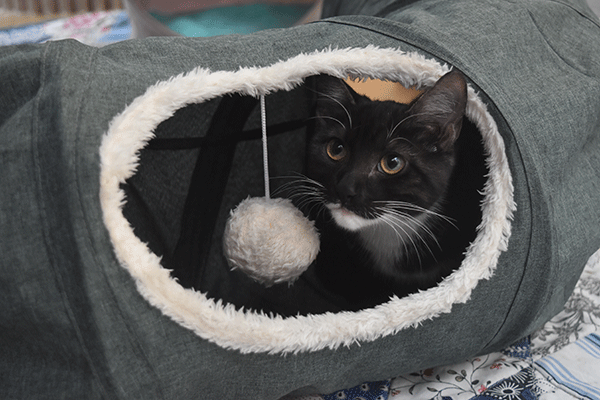Visits to the vet can be especially nerve-wracking for you and your cat. The fun usually begins trying to wrangle your cat into their carrier.
Need help getting your feline friend into their carrier?
Here are some easy tips to show you how to create positive associations and take the stress out of the situation, all you need is patience and the right kind of cat carrier.
- Buy the right carrier. You want a carrier that is approximately the length of your cat’s body (not including their tail) and the height of your cat when they are standing. Pick a durable top and front opening carrier, soft mesh style carriers may be okay for small cats and kittens or short trips but consider a sturdy, heavyweight carrier for bigger cats and if you are travelling any greater distances.
- Get your cat used to their carrier. You can help reduce stress with carrier training; use treats to create a positive link with the carrier. Don’t leave the carrier in the cupboard to be brought out just before a vet visit, instead, leave it out somewhere your cat likes to curl up, with an inviting blanket inside. Encourage your cat with plenty of pats if you see them going into the carrier of their own accord. Try some practice runs with your cat in their carrier, firstly just moving from one room to the next then progressing out to the car, then on to a short drive around the block with the carrier on the passenger seat. Each time providing lots of praise and treats when your cat is in their carrier, rewarding their behaviour and also building up positive associations.
- Cover the carrier. Consider getting a fitted cover for your cat’s carrier or draping a blanket or towel over the top. This will stop your cat being able to see through the door or sides of their carrier, which can cause stress. It will also be protective against disease transmission when you go to the vet. Some diseases can be passed by particles in the air, so keeping your cat covered in the waiting room will help keep them healthy. A cover for the cat carrier reduces noise, unfamiliar smells and sights, which may spook your kitty. If your cat finds trips to the vet particularly stressful, you may look at using a calming product for them the night before and morning of the vet visit. Products such as ‘Feliway’, ‘Zylkene’ or calming treats can help ease anxiety and make your cat feel more relaxed.
Try to be patient and not to rush the cat carrier training process, it may take your cat months just to get to the point of sitting in or near the carrier. Just keep in mind you want to make it as stress-free as possible so never force them to get into the carrier unless it is an emergency.
For further tips on getting your feline friend accustomed to their carrier see Cat Protection Society’s factsheet Cat carrier training or visit their website www.catprotection.org.au For general advice on cat care and everything feline, call the Cat Protection Society of NSW on 02 9557 4818.




